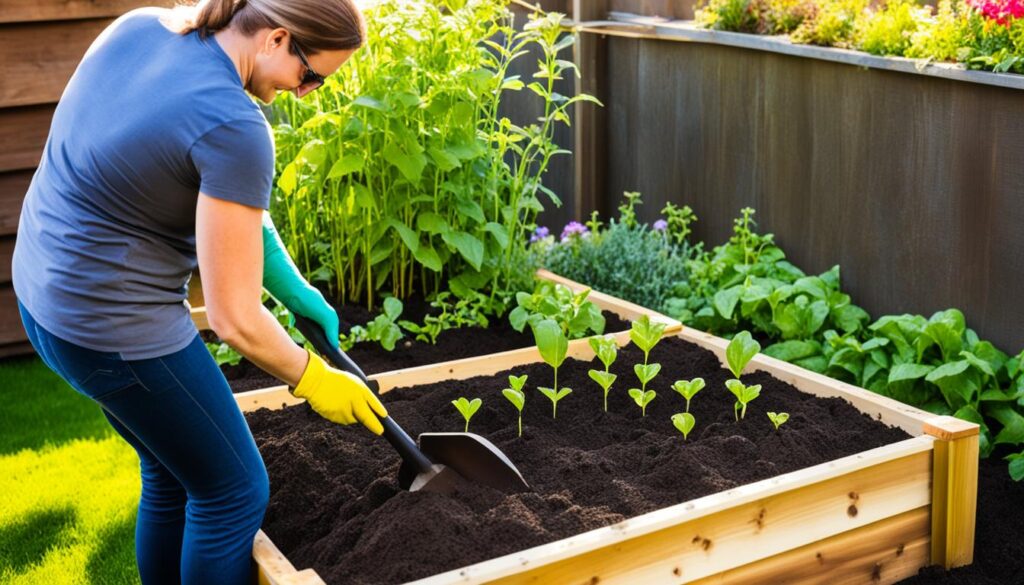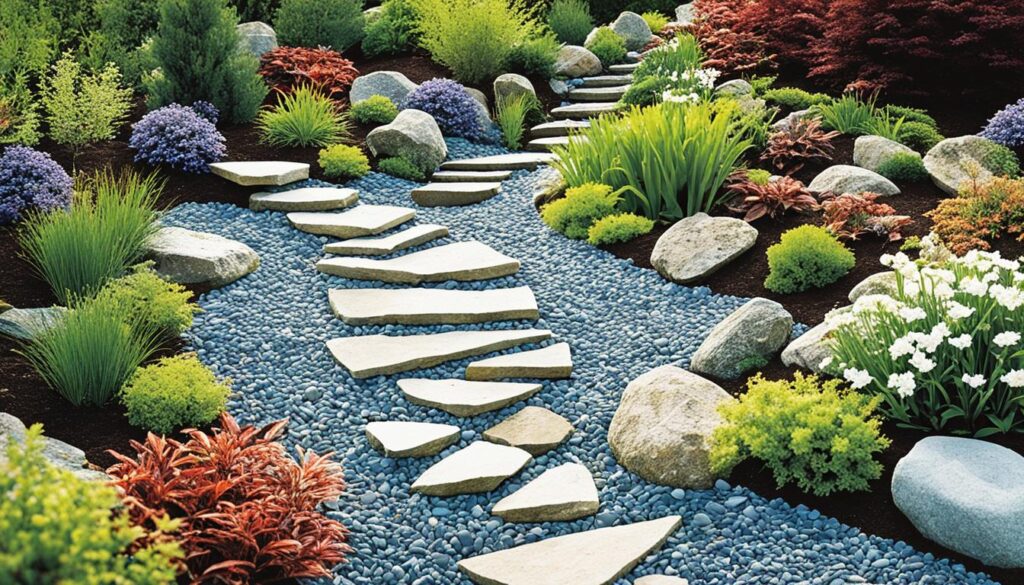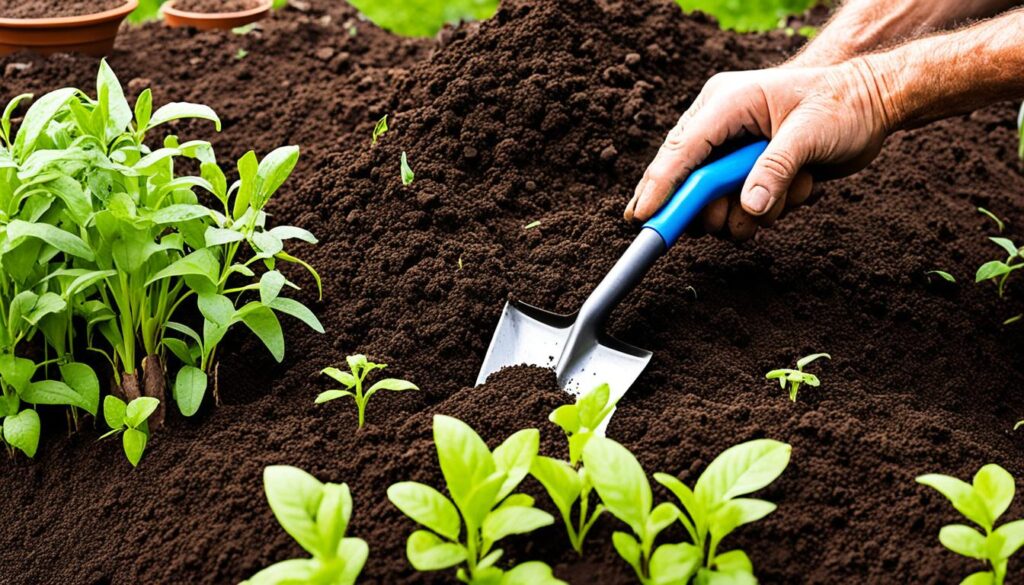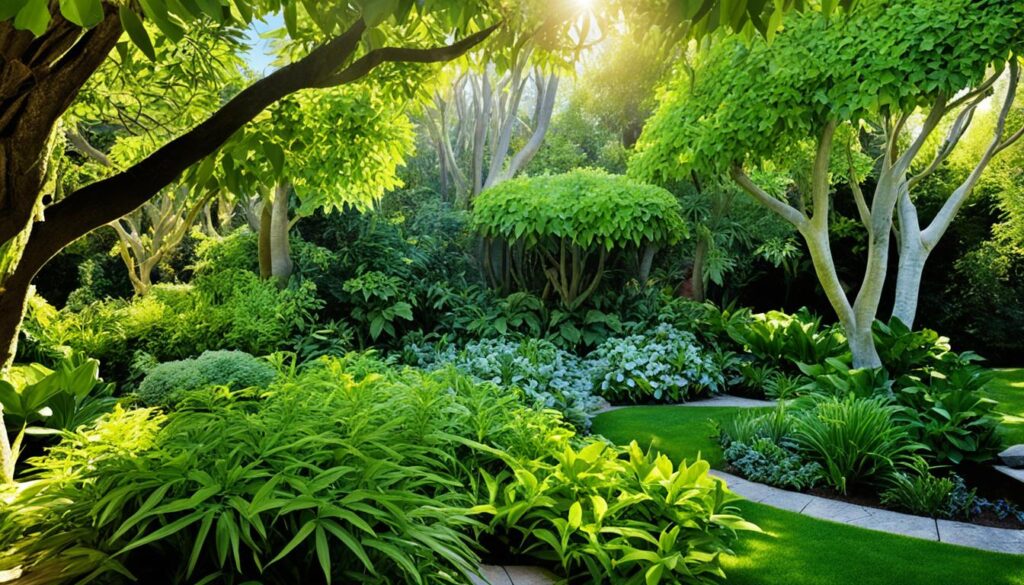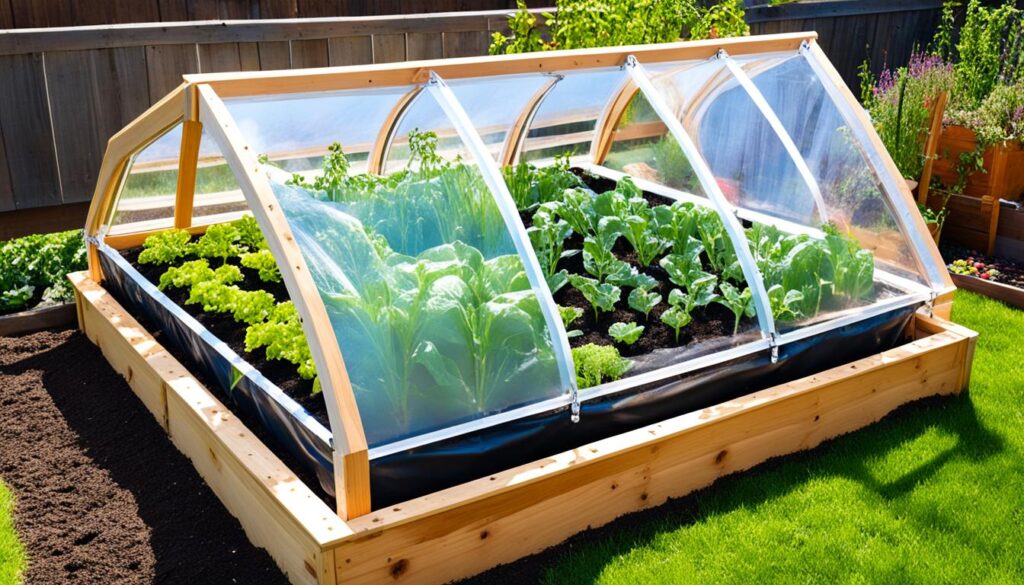Adding rocks in potted plants can have several benefits. According to experts, using stones as decorative accents on the top of the soil can create a clean and fresh finish to your container garden pots. Stones like sea pebbles or river stones can give a naturalistic and modern effect. Additionally, rocks can be used to prevent fungus gnats from laying eggs in the soil and to attract heat for heat-loving plants. Clay pebbles can also be placed at the base of a container to absorb excess water and aid in water consumption by the plants.
Key Takeaways
- Decorative rocks can create a clean and fresh finish to potted plants.
- Rocks can prevent fungus gnats and provide heat for heat-loving plants.
- Clay pebbles at the base of a container help absorb excess water.
Enhancing Drainage and Preventing Root Rot
Contrary to popular belief, placing rocks at the bottom of containers does not contribute to better drainage. In fact, it can create a saturated zone and cause water to linger around plant roots, increasing the likelihood of root rot. Water does not easily move between different materials like gravel or rocks and potting mix. It is important to have proper drainage holes in planters and use well-draining potting mixes to ensure healthy plant growth.
Debunking the Myth
Many gardeners have long believed that adding rocks to the bottom of pots aids in drainage. However, research and horticultural experts have shown that this practice does not enhance drainage but can instead lead to moisture-related issues like root rot. The water in the potting mix does not easily flow through the layer of rocks, creating a stagnant zone that traps water around the roots.
“Placing rocks at the bottom of containers does not improve drainage; instead, it can create a saturated zone and cause root rot.” – Expert Gardener
To ensure effective drainage and prevent root rot, it is crucial to focus on proper container design and the right choice of potting soil. Here are some key factors to consider:
- Drainage Holes: Use planters with sufficient drainage holes at the bottom. These holes allow excess water to escape, preventing water from pooling around the roots.
- Well-draining Potting Mix: Select a high-quality potting mix that promotes good drainage. Look for mixes labeled as “well-draining” or mix your own with a combination of organic materials like compost, peat moss, and perlite.
- Avoid Compaction: Avoid compacting the potting mix excessively, as compaction can hinder water movement and drainage. Lightly press the soil without compacting it too much.
- Air Circulation: Adequate air circulation is essential for the roots’ health. Ensure that there is enough space between the roots and the container’s side for air to flow.
Comparing Drainage Techniques
| Drainage Technique | Effectiveness | Benefits |
|---|---|---|
| Placing Rocks at the Bottom | Not effective | – Can create waterlogged conditions – Increases risk of root rot |
| Proper Drainage Holes | Highly effective | – Allows excess water to escape – Prevents water pooling – Reduces risk of root rot |
| Well-draining Potting Mix | Highly effective | – Promotes optimal root growth – Allows excess water to drain – Prevents waterlogged conditions |
By following proper drainage techniques, such as using containers with drainage holes and employing well-draining potting mixes, you can create a healthy environment for your potted plants. Remember that the goal is to allow water to flow freely through the soil and prevent waterlogging, ensuring optimal root health and plant growth.
Alternative Methods for Improving Drainage
Instead of using rocks at the bottom of containers, there are other methods to improve drainage.
Using stones or gravel as a top dressing on the soil surface can be advantageous for plant containers. Not only do they add an aesthetic appeal to your indoor plants, but they also serve practical purposes. By placing a layer of stones or gravel on top of the soil, you can help prevent evaporation and keep the soil moist for a longer period. This is particularly beneficial in dry environments or when you’re unable to water your plants regularly.
In addition to using stones or gravel as a top dressing, you can enhance drainage by incorporating other materials into your potting mixes. Coarse sand, vermiculite, or perlite are excellent options to add to your potting mixes as they improve the overall drainage capacity. These materials have larger particles that allow water to flow through more freely, preventing waterlogging and root rot.
It is worth noting that over time, potting mixes can become compacted, inhibiting proper water drainage. Thus, it is recommended to repot your plants periodically, ensuring the soil remains loose and well-aerated.
Advantages of Using Stones in Plant Containers:
- Enhanced moisture retention: Stones or gravel on the soil surface help prevent water evaporation, keeping the soil moist for longer periods.
- Aesthetic appeal: The use of stones as a top dressing adds visual interest to your indoor plants, creating a natural and modern look.
Reasons for Using Gravel in Indoor Plants:
- Improved drainage: Incorporating gravel or other drainage-enhancing materials in potting mixes prevents waterlogging and reduces the risk of root rot.
- Better water flow: The presence of larger particles like gravel allows water to flow more freely through the soil, promoting healthy root development.
Creating Humidity and Deterrents
When it comes to potted plants, rocks can serve more than just a decorative purpose. Did you know that they can also enhance plant growth and provide additional benefits? Let’s explore how rocks can improve the environment for your potted plants.
One advantage of using stones in plant containers is the ability to create humidity for tropical houseplants. By placing a tray of water-filled pebbles under the plant pot, the water slowly evaporates, increasing the humidity around the plant. This is especially beneficial for plants that thrive in humid conditions, such as ferns and orchids.
Adding rocks to create humidity for my tropical plants has made a tremendous difference in their overall health. The increased humidity has helped to prevent leaf wilting and promote vibrant growth.
Furthermore, rocks can also act as natural deterrents for unwanted visitors in your garden. Placing a layer of pebbles on top of the potting soil can discourage animals like cats and squirrels from digging in your plants. The texture of the stones and their weight make it unpleasant for these creatures to disturb your prized plant collection.
Incorporating rocks into your potted plants not only enhances the aesthetics but also provides practical benefits. From creating humidity for tropical plants to deterring pests, rocks can play a crucial role in maintaining a healthy and thriving container garden.

Benefits of Using Rocks in Potted Plants
| Benefits | Description |
|---|---|
| Humidity regulation | Placing a tray of water-filled pebbles under the plant pot creates a humid microenvironment beneficial for tropical plants. |
| Pest deterrence | A layer of rocks on top of the soil helps to discourage animals from disturbing the plants. |
| Decorative accent | Rocks add visual appeal to potted plants, enhancing the overall aesthetics of your garden. |
Proper Drainage Techniques
When it comes to ensuring healthy potted plants, proper drainage is essential. To promote effective rock drainage for potted plants and enhance their growth, here are some key techniques:
1. Choose planters with adequate drainage holes
Selecting planters that have sufficient drainage holes is crucial. These holes allow excess water to escape, preventing waterlogging and root rot. If your pots don’t have drainage holes, consider drilling them yourself using an electric drill.
2. Cover the drainage holes with a coffee filter or screen mesh
To prevent soil from falling out of the drainage holes, cover them with a coffee filter or screen mesh. This allows water to drain freely while retaining the soil inside the pot.
3. Utilize well-draining potting mixes
Using well-draining potting mixes is vital for proper drainage. These mixes are designed to facilitate water movement while providing essential nutrients to the plants. Look for potting mixes labeled specifically for drainage or consider adding organic matter like compost or perlite to improve drainage.
4. Repot plants when necessary
Over time, potted plants can outgrow their containers, leading to root congestion and poor drainage. If you notice that your plants are becoming root-bound or the potting mix is compacted, it’s time to repot them into larger containers. This ensures sufficient space for the roots to grow, allowing for better water drainage.

By implementing these proper drainage techniques, you can create an optimal environment for your potted plants. This allows for sufficient water drainage, prevents waterlogging, and promotes healthy plant growth.
Debunking the Myth
Despite the pervasive advice, studies have shown that placing rocks at the bottom of containers does not improve drainage. Instead, it can lead to water pooling around plant roots and increase the risk of root rot. The water will only move through the potting mix and stop when it encounters the layer of rocks or gravel.
| Common Misconception | Scientific Fact |
|---|---|
| Placing rocks at the bottom of containers improves drainage. | Studies have shown that rocks hinder water movement and contribute to water pooling around plant roots. |
| Rocks prevent soil from escaping through drainage holes. | Soil particles are small enough to pass through drainage holes, and rocks don’t prevent their movement. |
| Rocks create air pockets for better oxygenation. | Water accumulates around rocks, displacing oxygen and depriving plant roots. |
Despite these misconceptions, it’s important to understand the science behind drainage and choose proper techniques for promoting healthy plant growth. Placing rocks at the bottom of containers may have decorative value but doesn’t offer any advantage in terms of drainage. Instead, focus on using well-draining potting mixes and providing adequate drainage holes to ensure optimal growing conditions for your potted plants.
“Placing rocks at the bottom of containers is a long-standing myth that has been debunked by scientific research. It’s important for gardeners to understand that rocks in plant pots do not improve drainage and can actually hinder water movement. Instead, focus on proper drainage techniques and choose appropriate planting materials to create a healthy and thriving container garden.”
Recommendations from Experts
Horticulture experts suggest using alternative methods for improving drainage rather than relying on rocks at the bottom of containers. Proper drainage holes, well-draining potting mixes, and occasional repotting are recommended for healthy plant growth.
Rocks, however, still have their place in potted plants. They can be used as decorative accents on the soil surface, adding a natural and modern touch to your plant containers. Additionally, rocks can serve as a top dressing, helping to retain moisture in the soil and prevent evaporation.
“Using rocks as a decorative element can enhance the visual appeal of your potted plants while still maintaining proper drainage. Just remember to prioritize the health of your plants by ensuring they have adequate drainage and a well-draining potting mix.”
Incorporating rocks in your potted plants can also create a microclimate for specific plant species. By placing a tray of pebbles filled with water under the plant pot, you can increase humidity, benefiting tropical houseplants. Additionally, a layer of rocks on top of the potting soil can act as a deterrent for animals, preventing them from digging in your plants.
Overall, while rocks at the bottom of containers may not enhance drainage, they can still serve a purpose in potted plant care. By following expert recommendations and using rocks in creative ways, you can create a beautiful and healthy environment for your plants.

Common Misconceptions about Drainage
For years, many gardeners have believed that placing rocks or gravel at the bottom of containers can improve drainage in potted plants. However, this practice has been proven ineffective and can actually hinder water movement through the soil.
Contrary to popular belief, rocks do not enhance potted plant growth or drainage. In fact, they can create a stagnant zone where water accumulates around the roots, increasing the risk of root rot. Water does not easily pass through different materials like rocks or gravel and potting mix.
To promote healthy plant growth, it is crucial to understand the science behind drainage and employ proper techniques. This includes using planters with adequate drainage holes and selecting well-draining potting mixes. By allowing excess water to freely flow through the soil, plants can thrive without the risk of root rot.
“Placing rocks at the bottom of containers does not contribute to better drainage. In fact, it can create a saturated zone and cause water to linger around plant roots, increasing the likelihood of root rot.”
Understanding the Science of Drainage
The misconception about rocks improving drainage stems from the belief that they create a reservoir at the bottom of the container to hold excess water. However, this flawed notion fails to account for how water moves through different materials. Water follows the path of least resistance, which means it flows through the potting mix but stops when it encounters the layer of rocks or gravel at the bottom of the container.
To ensure proper drainage, it is essential to prioritize well-draining potting mixes and adequate drainage holes. These elements allow water to pass through easily without causing waterlogging or compromising the health of the plants.
The Role of Proper Techniques in Promoting Healthy Plant Growth
By debunking the myth of using rocks for drainage, gardeners can focus on more effective methods to promote healthy plant growth in containers. Here are some recommended techniques:
- Choose planters with sufficient drainage holes to allow excess water to escape.
- Opt for well-draining potting mixes that consist of organic matter, perlite, or vermiculite.
- Occasionally repot plants to prevent compacted potting mixes, which can hinder drainage.
Incorporating these techniques provides optimal growing conditions for potted plants, ensuring they receive the proper balance of moisture, air circulation, and nutrients. Remember, the key to successful container gardening lies in understanding the science of drainage and adopting suitable techniques.
Creating an Optimal Growing Environment
The purpose of using rocks or other methods for drainage in potted plants is to create an optimal growing environment. By considering factors such as proper water drainage, moisture retention, and air circulation, gardeners can provide the best conditions for their plants to thrive.
When it comes to the advantages of using stones in plant containers, they play a crucial role in maintaining proper water drainage. By allowing excess water to flow away from the roots, rocks prevent waterlogging and the risk of root rot. This encourages healthy plant growth and prevents moisture-related issues.
Moreover, rocks can aid in moisture retention by reducing evaporation from the soil surface. Placing a layer of stones on top of the potting mix helps to preserve moisture and keeps the soil hydrated for a longer period. This is particularly beneficial in dry or arid climates where water conservation is essential.
Adequate air circulation is another vital aspect in creating an optimal growing environment. Rocks in potted plants help to improve air circulation by creating small gaps or air pockets within the soil. This allows oxygen to reach the roots more efficiently, facilitating nutrient uptake and overall plant health.
| Advantages of Using Stones in Plant Containers |
|---|
| Improved water drainage |
| Enhanced moisture retention |
| Facilitated air circulation |
By understanding the principles of drainage and implementing appropriate techniques, gardeners can create an optimal growing environment for their potted plants. Ensuring proper water drainage, promoting moisture retention, and facilitating air circulation are key factors in achieving successful container gardening.
Remember, the goal is to provide the best conditions for plants to thrive, and rocks contribute to this goal by improving water drainage, retaining moisture, and enhancing air circulation.
Practical Tips for Container Gardening
When it comes to container gardening, there are various factors to consider to ensure successful plant growth. While using rocks in pots may not be necessary, there are other practical tips that can help create a favorable environment for your indoor plants.
Choosing the Right Container Size
One important aspect of container gardening is selecting the appropriate size for your plant pots. The size of the container should correspond to the size of the plant, allowing enough space for root growth. Too small of a container can restrict root development, while a pot that’s too large can lead to overwatering.
Providing Adequate Sunlight
Proper sunlight is crucial for the healthy growth of indoor plants. Be sure to place your containers in areas where they can receive sufficient sunlight throughout the day. Different plants have varying sunlight requirements, so it’s important to consider the specific needs of each plant when determining their positioning.
Regular Watering
Watering is a vital aspect of container gardening. Maintain a regular watering schedule, allowing the soil to dry slightly between waterings to prevent overwatering and root rot. The frequency of watering may depend on factors like the plant species, pot size, and environmental conditions.
Proper Fertilization
Regular fertilization is necessary to ensure that your potted plants receive the essential nutrients they need for healthy growth. Use a balanced fertilizer or a specialized fertilizer based on the specific requirements of your plants. Follow the instructions on the fertilizer packaging for the correct dosage and application frequency.
Creating a Humidity Tray
Did you know? Placing a tray filled with water and pebbles under your containers can help increase humidity around your plants.
If you have tropical houseplants that require higher humidity levels, you can create a simple humidity tray. Fill a tray with small pebbles or stones and add water until it partially covers the stones. Place your plant pot on top of the pebbles, ensuring that the water does not touch the bottom of the pot. As the water evaporates, it will increase the humidity around your plants, providing a more favorable environment for their growth.
| Benefit | Reason for Use |
|---|---|
| Enhanced drainage | To ensure water flows through the potting mix effectively and prevents waterlogging |
| Moisture retention | To help keep the soil moist and reduce the frequency of watering |
| Aesthetic appeal | To add a decorative touch and enhance the visual appeal of container gardens |
By following these practical tips, you can create an optimal growing environment for your potted plants, promoting healthy growth and enhancing the beauty of your indoor space.
Conclusion
After careful analysis, it has become evident that putting rocks in potted plants does not provide the benefits that were traditionally believed. In fact, it can have detrimental effects on the health of your plants. The practice of using rocks to improve drainage has been debunked as ineffective and can lead to root rot and hamper water movement through the soil.
Instead of relying on rocks, gardeners are advised to focus on proper drainage techniques that promote healthy plant growth. This includes using well-draining potting mixes that allow excess water to flow through, providing adequate drainage holes in planters, and ensuring the right amount of moisture for your plants.
While rocks can still be used as decorative accents on the soil surface or as a top dressing to retain moisture, their main purpose in potted plants should not involve drainage. By adopting these proper techniques, gardeners can create an optimal growing environment for their plants and promote their overall well-being.

